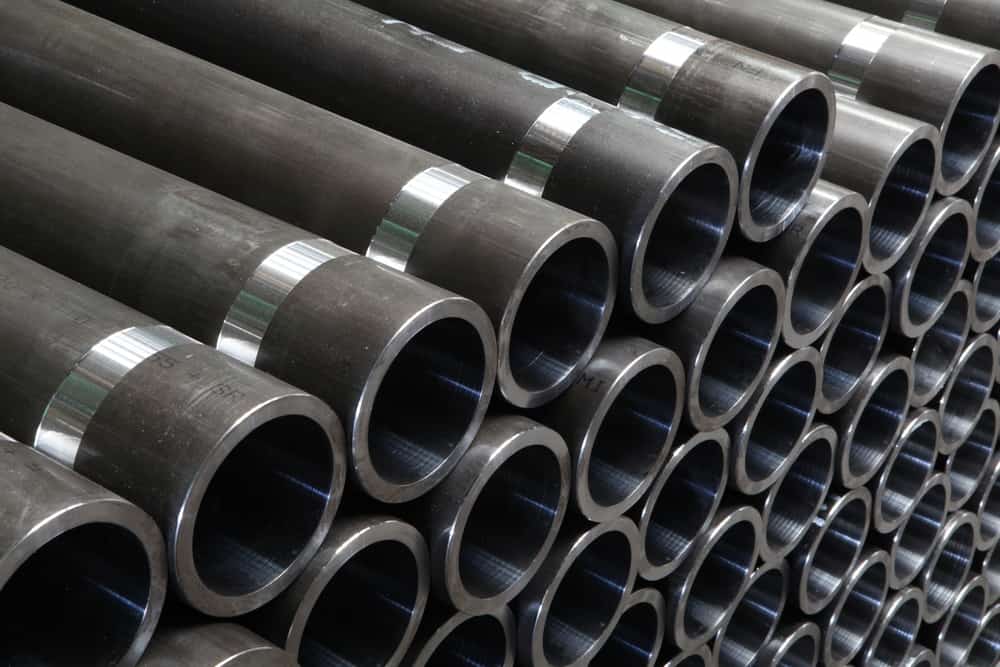
The term “carbon steel” represents a broad category of steel with a range of carbon content. Recognized for its impressive strength and durability, industries including shipbuilding, pipeline construction, railway development, and many others have made carbon steel their material of choice. Given the variability of constituent elements, though, welding carbon steel often requires a more involved setup and process.
Welders know how the same heat input can have different reactions with the metal—down to the microstructural level—from even the slightest elemental variations. To account for these changes in carbon steel, weld parameter optimization is critical. In this article, we will explore TIG welding parameters for carbon steels.
About Carbon Steel and its Weldability
Carbon steel is primarily the product of two elements: iron and carbon. Silicon, manganese, and copper appear in smaller percentages. Based on the carbon content, carbon steel can be classified into four categories as follows:
| Type of Carbon Steel | Carbon Content |
| Low/ Mild carbon steel | 0.05 – 0.3% |
| Medium carbon steel | 0.3 – 0.6% |
| High carbon steel | 0.6 – 1.0% |
| Ultra-high carbon steel | 1.25 – 2.0% |
- Low carbon steels can be welded with any common welding process. For carbon content less than 0.12%, the chance of porosity from welding is high.
- Medium carbon steel is more difficult to weld than low carbon steel and usually requires pre-and post-heat treatment to avoid cracking. An ideal way to weld medium carbon steel is to use a low-hydrogen welding method.
- Increased carbon content results in decreased weldability. In such cases, preheating, weld temperature control, and low-hydrogen welding are requirements.
- The weldability of ultra-high carbon steel is very poor. While the hardness of the steel is high, it is also extremely brittle due to the formation of a high concentration of martensite during welding.
TIG Welding Parameters for Carbon Steel
Detailing the weld parameters is an effective way to produce high-quality weld results while ensuring welder safety. In the case of carbon steel, heat input, gas type, and welding process are the primary parameters used to address the metal’s varying carbon content.
TIG, a low hydrogen welding method effective for carbon steel welding, reduces the chances of hydrogen cracking. For different types of carbon steel, the following weld parameters should be considered:
- Gas type: Argon is commonly used as a shielding gas. It is an excellent choice for oxidation protection, arc stability, and splatter reduction. Another good gas choice for TIG welding carbon steel is helium. It is hotter than argon and can produce a better arc and more fluid weld pool, reducing porosity. However, it is important to lower the amperage with helium to prevent excess-heat-related issues like warping.
- Heat input: Mild carbon steel welding requires lower heat input while medium and high carbon steels require a comparatively higher heat input. Increased heat lowers the cooling rate of the weld puddle, reducing the risk of hydrogen cracking. The general recommended heat input for carbon steel is 30-70kJ/in.
Heat input is based on amperage and travel speed. Amperage varies depending on the thickness of the metal used. In the case of low carbon steel, welders can usually weld 0.01in/amp. The desired heat input also dictates the travel speed. For a given amperage, higher heat input can be achieved with a slower travel speed.
- Weld preparation: Medium and high carbon steels require preheating to reduce embrittlement and cracking due to the martensite that forms from rapid cooling. In the case of mild carbon steel, pre-heating may be required when operating at cold temperatures.
Addressing Different Welding Specifications of Carbon Steel
Minute differences in a metal’s composition can alter its properties. With varying carbon content providing distinct characteristics to different types of carbon steel, manual welders or orbital welding operators need to change to the weld parameters to accommodate the change in metallurgical properties. Using the gas types, amperages, heat input, and surface preparation techniques for different carbon steels described above offers an effective solution. Depending on the application, there are also different standards set by the American Welding Society (AWS) and other agencies to guide welders.
By understanding each weld parameter and its relationship with the weld material, manufacturers can develop an ideal weld schedule. In the case of carbon steel, weld schedules will change according to thee type and variation of carbon content.
Arc Machines, Inc. has been a leading provider of advanced orbital welding solutions and orbital welding schedules for decades. For inquiries regarding products, contact sales@arcmachines.com. For service inquiries, contact service@arcmachines.com. To develop a custom welding schedule or finalize TIG welding parameters for carbon steel welding applications , contact us to arrange a meeting.




